This is my first question, please let me know if I'm doing anything wrong. We have a df with two variables, and want to model EPR (egg production rate) as a function of temperature.
The relevant packages as per the nls page:
install.packages("tidyverse")
install.packages("nls.multstart")
install.packages("nlstools")
library(tidyverse)
library(nls.multstart)
library(nlstools)
The relevant variables from a larger df:
temp=c(9.2,9.9,12.7,12.8,14.3,14.5,16.3,16.5,18,18,19.6,19.6,19.9,19.9,22,22.4,23.2,23.4,25.3,25.6,27,27.3,28.5,30.3,20.9)
EPR=c(1.5,0,0,0,1.27,0.56,3.08,0.575,2.7,3.09,2,6.3,2,3.76,3.7,1.65,7.1,18.9,7.07,3.77,13.79,0,0,0.47,0)
df<-data.frame(temp,EPR)
Here I write the formula with the five parameters to be estimated (k1,a,b,k2,c), temp will be the x values. So far so good.
formula<-function(k1,a,b,k2,c,temp) {
modelEPR<-k1*1/(1+exp(-a*(temp-b)))-k2*exp(c*temp)
return(modelEPR)
}
This is where I'm stuck; I'm already using quite narrow start_lower and upper, since I now know the parameters by using the excel solver somewhat successfully. The values I get with this method will get me a model, albeit quite an inaccurate one. Yes, I gave the start lower and upper a much greater range in the beginning, but that didn't yield any better results.
fit <- nls_multstart(EPR ~ formula(k1,a,b,k2,c,temp),
data = df,
iter = 100,
start_lower = c(k1 = 14, a = 0.3, b = 20, k2 = 0.02, c = 0.15),
start_upper = c(k1 = 15, a = 0.5, b = 21, k2 = 0.08, c = 0.24),
supp_errors = 'Y',
na.action = na.omit)
fit
As aforementioned, I used the excel solver to successfully make the model and I got the parameter estimates, then tried to just manually insert them here in R, which makes for a much better model.
model<-df %>%
mutate(pred=(14.69/(1+exp(-0.41*(temp-20.52)))-0.05*exp(0.19 *temp))) %>%
ggplot()+
xlab("Temperature (°C)")+
ylab("EPR (Eggs per female per day")+
geom_point(aes(temp,EPR))+
geom_line(aes(temp,pred),col="red")
model
Ultimately, I have two questions; a) What am I doing wrong? Or is it simply the data being weird? Seems to work better with excel?! b) How do I code the bridge between fit and model? fit will yield the 5 parameters, but how do I insert them directly into the model function? Can I utilize mutate somehow here?
Would appreciate any help!
